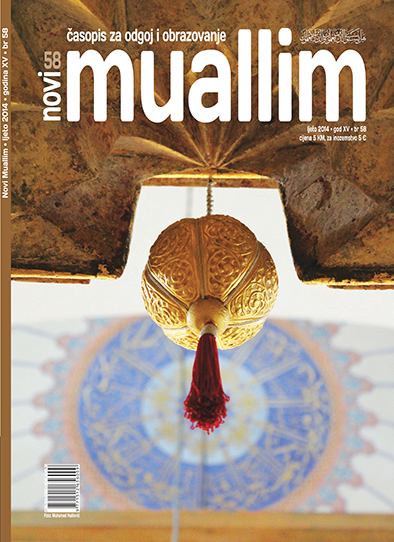SOCIAL ROLE AND SIGINIFICANSE OF THE INSTITUTION OF IMARET IN THE 15TH AND 16TH CENTURY BiH
DOI:
https://doi.org/10.26340/muallim.v15i58.246Keywords:
madrasa students, the poor, imarat, zavija (tekke)Abstract
UDK 364.2:613.2:28](497.6)
28-784-463
With a firm faith in the Prophet’s words that the lasting sadaqa has its value even after the death of the benefactor, Muslims are building numerous social-humanitarian institutions. Amongst these the most significant are imarat and musafirhana. Imarat is a public (charity) kitchen wherein the poor, travellers, madrasa students, scholars, waqf employees and others can have free meal and occasionally financial support. Musafirhana is such an institution where they could, in addition to this could also get free lodging. This institution developed in our areas after the arrival of the Ottomans. Tekiyyas (tekke), considered to be prototype of imarat, were established right after the conquest of a certain area. Tekiyyas were established by dervishes and they were a significant factor in spreading the faith of Islam and the rich Islamic culture and civilisation on the territory of BiH. This article explores the history of the institution of imarat, its social and humanitarian role and its significance in Bosnia and Herzegovina. While collecting the relevant data about the topic it came to our notice that there was very little research done on it. All the revisions through which we tried to present somewhat complete picture of imarat in Bosnia and Herzegovina in 15th and 16th century have just opened a gate for a new research work.
Downloads
Published
How to Cite
Issue
Section
License
Naknada:
a. Časopis ne naplaćuje naknadu za obradu članaka (APC) i naknadu za podnošenje članaka.
Autori koji objavljuju u ovom časopisu pristaju na sljedeće uvijete:
- Autori zadržavaju autorska prava i pružaju časopisu pravo prvog objavljivanja, pri čemu će rad jednu godinu po objavljivanju biti podložan licenci Creative Commons imenovanje koja omogućuje drugima da dijele rad uz uvijet navođenja autorstva i izvornog objavljivanja u ovom časopisu.
- Autori mogu izraditi zasebne, ugovorne aranžmane za ne-ekskluzivnu distribuciju rada objavljenog u časopisu (npr. postavljanje u institucionalni repozitorij ili objavljivanje u knjizi), uz navođenje da je rad izvorno objavljen u ovom časopisu.


